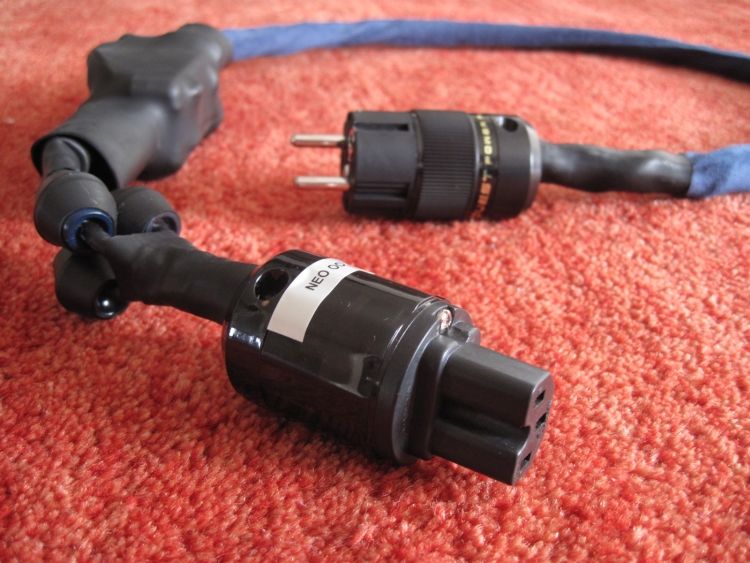
Neo OCC is a further development of the Neo, using OCC (Ultra Pure Ohno Continuous Cast) copper wire for an even more musical result.
Review samples kindly supplied by Mad Scientist Audio
Retail prices:
Neo OCC 11AWG: $599
Neo OCC 9AWG: $699
Options include extra length, alternate sleeve colors and other connectors. Rebate if buying multiples. Free blackdiscus sample to get a taste of the Power Purifier. 30 day money back guarantee.
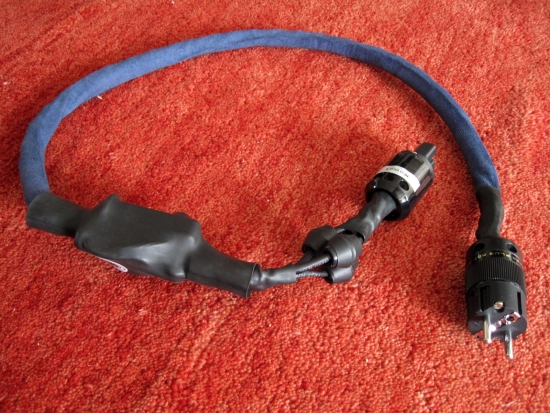
After the Neo
While I was reviewing the Neo, Bob (AKA Mad Professor) informed me that he was working on a variant using OCC wire. Lest one think that copper and OCC copper are interchangeable, and a mere swapping of wire results in an overall better cable, it really is not that simple. There’s rather more to it. OCC in generic has a very relaxed quality, which can become too much, especially if the cable has some form of filtering included. Because of this, the cable’s sound balance had to be re-balanced. In case of the Mad Scientist Neo OCC, various approaches were tried, and what ultimately did the trick was to change the Kegs’ composition. In doing so, the balance was restored to a spot-on mix between smoothness and livelyness. OCC is expensive wire, especially in the 9AWG size of this review model, and this drives up the price of the cable, but I can already tell you that the difference is not subtle.
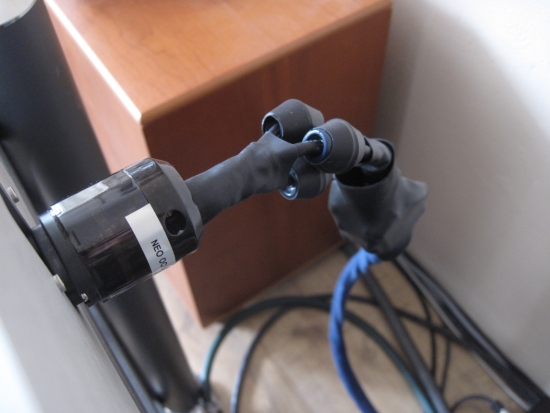
Connecting
The first component that I usually try new powercords with, is my main CD player. For the longest time, this was the Levinson 390S, but lately I am more smitten with the Wadia 781i. Due to this particular powercable’s 1 meter length, I couldn’t try it with the Wadia (which is set up “all the way” on the left rack), so this time, I used the Jeff Rowland Aeris DAC instead.
This is very interesting, because so far it seemed that the Aeris would only be happy with 2 cables: either the Reference Tweaks Gold Label powercord, or the Harmonic Technology Pro AC II. No matter what I tried, other brands would not work well. The Gold Label works best when the Aeris is fed by the Levinson 390S CD player, and makes for a very lively, engaging sound. The Pro AC II I find to work better when the Aeris is fed by the AudioAanZee Ultra Flow music server, lending a nice and seductive rosy relaxedness to the music, making it more analog to my ears. Since the Wadia made its entrance, the Pro AC II had been my powercable of choice for the Aeris.
Listening – Neo
First I wanted to see what the regular Neo would do with the Aeris, so I connected it instead of the Harmonic Pro AC II. Yes, nice! I liked it immediately. It’s the combination of a very open, fast and transparent, yet very fluid and unagressive sound, that immediately appeals to me. The Neo really sounds consistent it seems, portraying the same attributes with the Aeris as it did with the Levinson 390S. Compared to the Pro ACII, the sound is a little thinner, less grounded and solid, but oh so magical and easily a natural fit. Of these cables, I don’t really know which one I prefer at this stage. Time will tell.
Listening – Neo OCC 9AWG
Substituting the Neo for the Neo OCC 9AWG retained the transparency and magic of the Neo, and hugely added to that with fuller bass and a much richer midrange. The Neo’s airy treble is mostly there still, but the overall balance is definitely a little darker. The sound was more relaxed than with the Neo, with seemingly less apparent attack, but speed was less but still good. It’s probably just the absence of edge that makes for the impression of a calmer sound, but along with this, the Neo OCC also sounds bigger, grander. Voices flow more effortlessly from the speakers, reminding me of how the all-Jadis setup of a friend deals with voices. Somehow it’s as if they sound less electronic. Going back to the regular Neo indeed highlights the upper bass and lower midrange as being most different: the Neo sounds a lot thinner in comparison. I mean, it’s not really thin in absolute terms, just a little thinner than the quite full sounding Pro AC II, and a lot thinner than the positively luxurious sounding Neo OCC.
That’s all very good, one would say, and indeed it is, but there is a snag. In all its roundness and lack of edge, the OCC tends to sound a little over-smooth, and after listening longer I start to notice that it might just be too voluptuous in the bass and lower midrange. The OCC is a big improvement over the regular Neo in many respects, but ultimately I am leaning more toward the regular Neo because it is so nicely open, fast and communicative. It is definitely less voluptuously rich than the OCC, and less seductive because of that, but I do find that the Neo matches my system better.
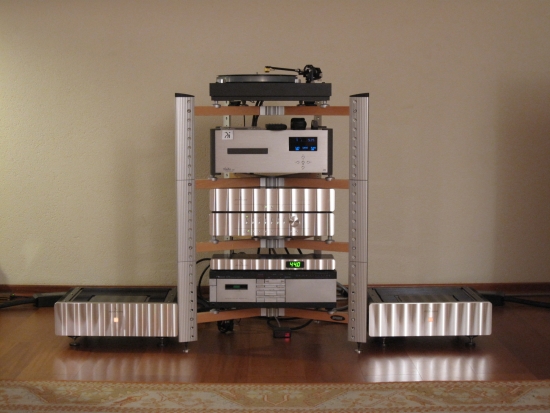
Neo and Neo OCC in another system
In my own audio system, both the Harmonic Technology and Mad Scientist cables work very well, but somehow the situation is different in my friend JW’s system. It’s something that I still don’t really understand, seeing as the core of his system is almost the same as the core of my own system. But anyway, JW has purchased the Neo a short while ago, and we have now also tried the Neo OCC in his setup, and somehow both cables behave a little differently in his setup than in mine. For example: in my own setup both the Neo and Neo OCC have better PRAT and transient sharpness than the Harmonic Tech cables. The latter also clearly work well in my setup, but not at all in JW’s, where all Harmonic Tech Pro AC II types (I have 4 versions) sound too restrained dynamically.
In JW’s setup and my setup alike, both the Neo and the Neo OCC sound much better than any of the Harmonic Technology Pro AC II types, and A LOT better than JW’s 191CY Lapp with Oyaide connectors in all aspects except for power and bass drive. However, in JW’s setup ultimately both Mad Scientist cables are just a little bit too polite, and not fitting all types of music as well. Easy going music works very well indeed, but more dynamic music loses its schwung somewhat, compared to the Lapp cable.
Even if the Neo OCC is more relaxed than the Neo, still in this setup, it makes for a big improvement over the Neo in JW’s setup, sounding bolder, fuller and now fitting more kinds of music well. Even if the Neo OCC in itself trades some more dynamic power for color and richness compared to the regular Neo, the overall feeling of restraint is less because the OCC sounds so generous otherwise.
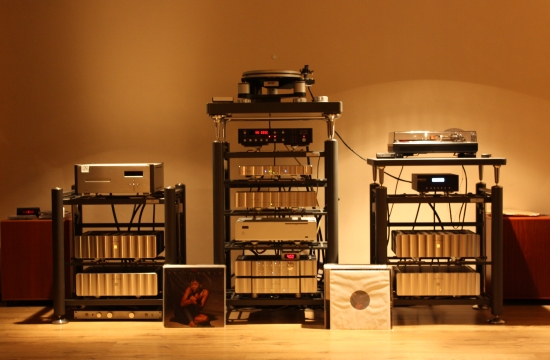
Final comparison
As a final comparison, I borrowed a LessLoss Signature powercable from a friend and used it alongside with the Neo and Neo OCC on the Rowland Aeris. This was very interesting! The LessLoss is a very good cable and a lot more expensive than the Mad Scientist OCC, but apart from connector quality and looks in general, I don’t feel that it and the Neo OCC are in different classes. The Neo OCC sounds a lot smoother and warmer than the Lessloss Signature, while maintaining most of the transparency and detail of the latter, and adding to that with the Scientist-signature soundstage magic. The Neo OCC is one smooth ride and it is very seductive, especially when playing soul music.
However, once again it is clear that the OCC cable is just a little bit too smooth and lacks power and drive in the bass. It does have pretty good treble, but in that aspect it is bettered by its more affordable stablemate, the regular Neo, which I feel is actually better than the LessLoss Signature on all accounts. The Neo manages to make the LessLoss sound almost a little boring and definitely a little synthetic sounding, although the LessLoss is ultimately more refined and neutral. The Neo has less body and has a less grounded sound, but in spite of that I feel that it is acoustically more convincing than the LessLoss signature. I wonder what will happen if one attached the same high grade Oyaide connectors to the Neo…
Ultimately, when comparing the Neo and Neo OCC, most important judging factor for me is that the Neo, while still no rhythm king, has better PRAT and speed than the OCC version, making it sound more alive and more involving, and because of this, the Neo would be my cable of choice, even if I have to trade in some richness in the upper bass and lower midrange.
Conclusion
The Neo, and Neo OCC even more so, are strong medicine! When used in the right doses, in the right circumstances, the effect can be infectuous and addictive, rendering even much more expensive cables a little boring. But in the wrong circumstances, they can lack dynamic power and drive. Don’t get me wrong – both cables are very, very refined and very well resolving, and especially the Neo has superb speed and transient snap, but in return for their superbly spacious sound, both cables also seem to have traded in some raw power, and it is this aspect that will be the judging factor. In my setup, it works very well, and this makes sense, because the Harmonic Tech cables (also OCC) also work well. In other setups, with a different sonic balance, the result can be less optimal. Neo: highly recommended, Neo OCC: use with caution.
Read Also
Mad Scientist Nitro Nano power cable (successor to the Neo)
External Links
Manufacturer: Madscientist

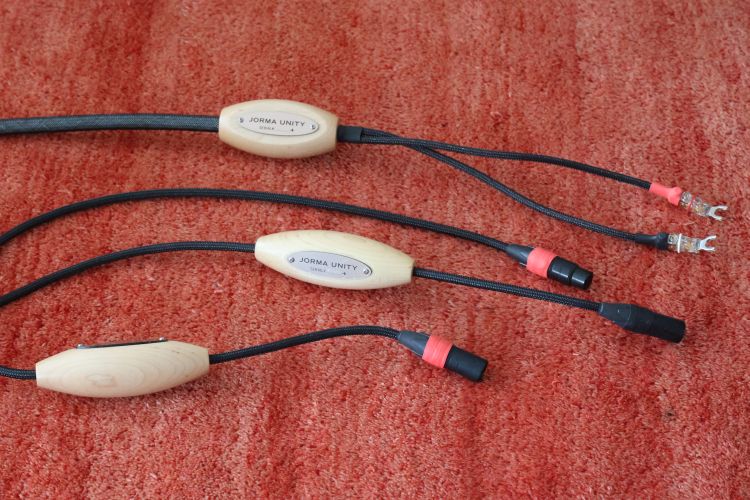
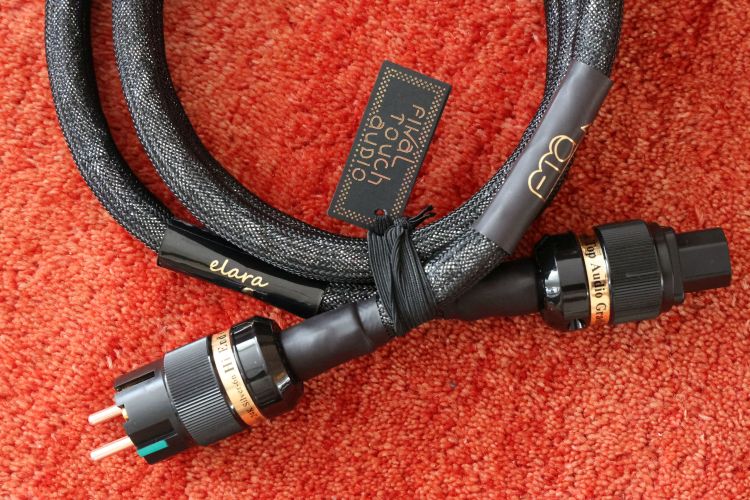
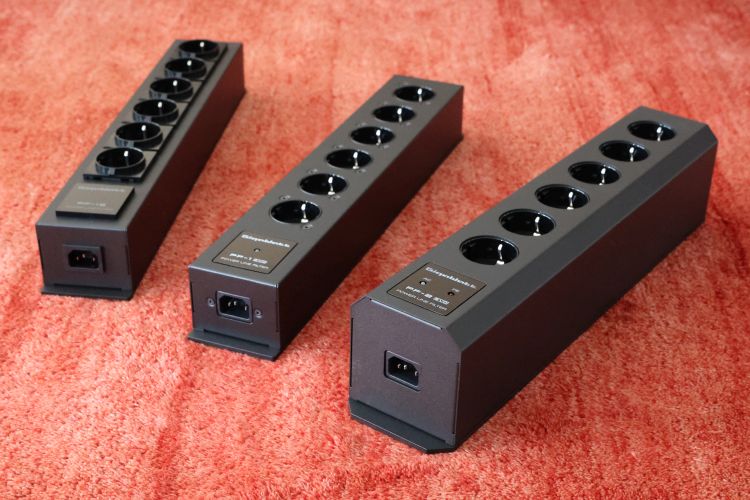
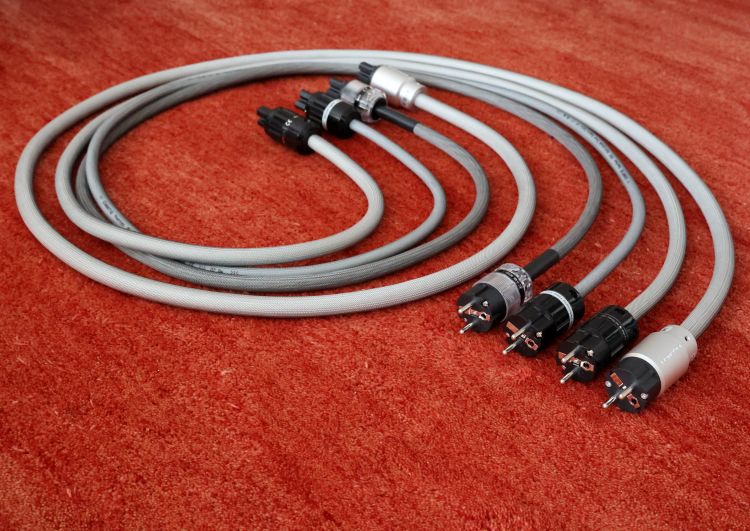
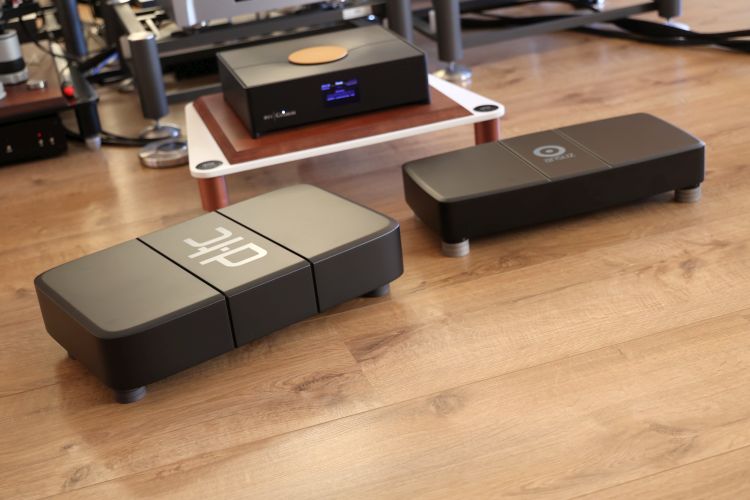
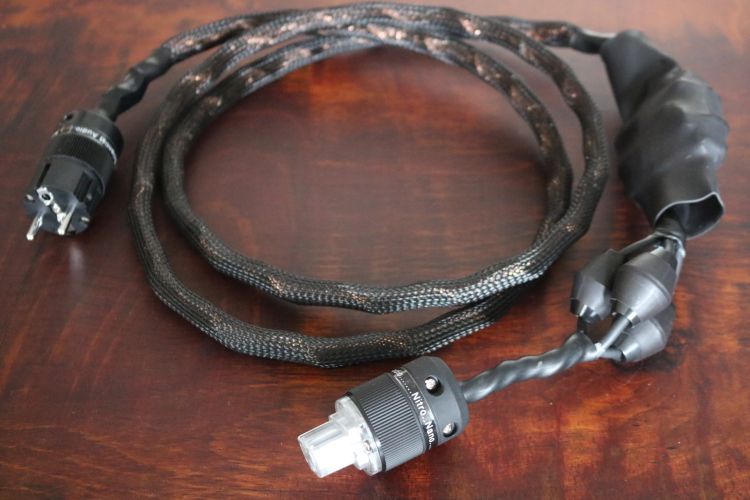
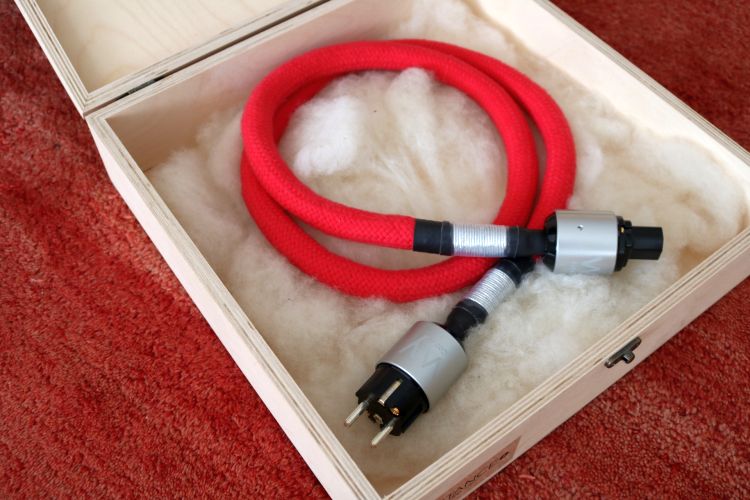
Dear Friend:
I would like know the real differences between the Mamba ‘Power Blast’ and the Mad Scientist Audio Neo OCC , as you have been able to try both cables. Is it worth spending so much money on MAMBA or is an otstanding purchase A Mad Scientist Audio ? .I have a sound equipement similar to yours (MG 1.7 & Jeff Rowland) and that’s why I’m writing to you.
From Spain,
Best Regards!
kiko
Difficult question, as I have not directly compared the two and don’t have either still around to re-test. That said, I’d say that they have a similar sound presentation. Both are relaxed and have a certain magic. If anything I’d say that the Mamba sounded creamier and the Mad Scientist airier. Another cable to contemplate might be the Taiko Nagado.